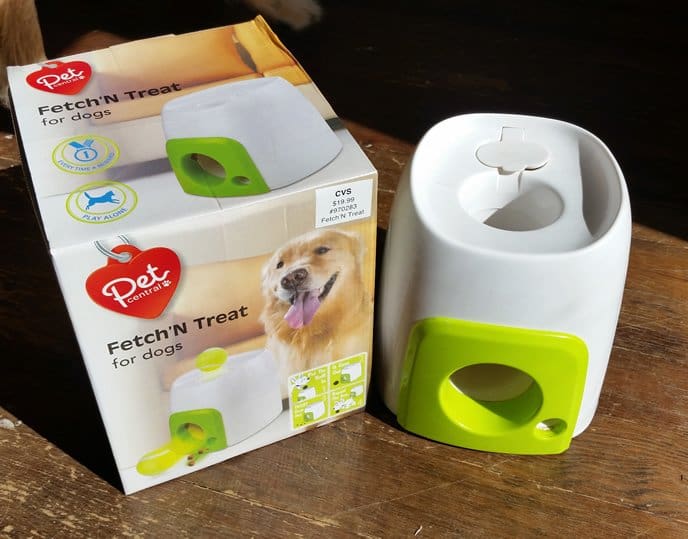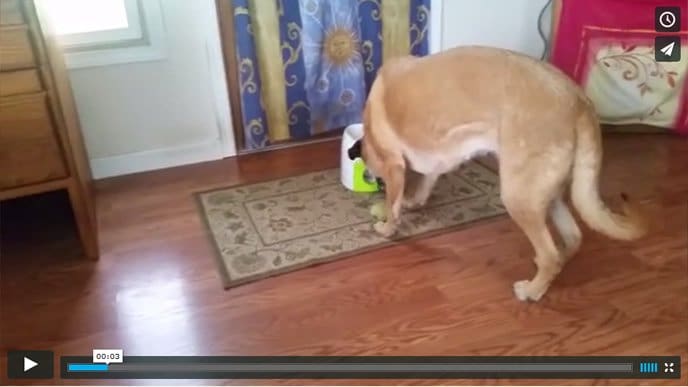Were you aware that, according to Federal law, it’s okay for a certain percentage of the chicken you buy in the supermarket to contain some Salmonella bacteria? The legally acceptable amount depends on the kind of chicken we’re talking about; if we’re talking about whole raw broiler chickens, up to 9.8 percent could be infected, but if we’re considering raw chicken parts, the number is even higher. In fact, up to 15.4 percent of the raw chicken parts may contain that pathogenic bacteria, without setting off any sort of recall or hysteria. In contrast, even a single positive test for Salmonella in raw dog food triggers a recall and headlines and a certain amount of hysteria among dog owners. What gives?
© Dmitrimaruta | Dreamstime.com

Let’s Start at the Beginning. All food-source animals (cows, pigs, poultry, etc.) are capable of harboring bacteria in their digestive tracts that can be pathogenic (capable of causing illness) to humans. The bacteria range in their ability to cause illness in humans who consume them; some are more deadly than others. The most common causes of foodbourne illness are Salmonella and Campylobacter; the most dangerous are Listeria and Escherichia coli.
The more animals that come into contact with each other as they are grown on a food-production facility, the more of them will become hosts to these bacteria. As infected animals are slaughtered and their digestive tracts are removed in processing of their carcasses, a certain amount of this pathogenic bacteria gets splashed about.
The farmers who raise animals take steps to reduce the amount of feces that the animals live in, and slaughterhouse workers strive to reduce the amount of feces that’s on the outside of the animals (as well as the stomach and intestinal content) from getting on the animals’ carcass. But it’s frankly impossible to keep all the poop and meat separate, especially at the fast rate of modern slaughter facilities.
Who Keeps the Meat Clean?
The United States Department of Agriculture’s Food Safety and Inspection Service (USDA FSIS) is the government agency responsible for is responsible for verifying that “the nation’s commercial supply of meat, poultry, and egg products is safe, wholesome, and properly labeled and packaged.” FSIS regulations are constantly shaped and revised as inspections and tests made on samples pulled from the processing lines and stores gauge how well meat industry practices – from production to slaughter and on through processing, packaging, and sale – are performing in terms of delivering safe food.
Illness caused by the consumption of pathogenic bacteria on our food exacts a cost on society, in terms of everything from decreased production when workers are home sick and medical bills for sick people, to the death of the most vulnerable people who become ill. According to the Food Policy Research Center at the University of Minnesota, each year, an estimated one million illnesses, 19,000 hospitalizations, and more than 350 deaths are attributed to Salmonella in the U.S. Our government, then, has a vested interest in continually tinkering with the regulations that in place to protect its citizens.
Change in Federal Law
The Food Safety Modernization Act (FSMA, pronounced fizz-ma) passed into law in 2011 attempts to dramatically decrease the numbers of human illnesses caused by foodbourne bacteria via dozens of dozens of small ways. One of those ways was to institute a zero-tolerance policy for Salmonella in “ready to eat” foods – products that are presented to consumers as requiring no further cooking in order to make them safe to handle and eat.
A zero-tolerance policy means that presence of the bacteria on a food product (in any amount and at any point in time) is considered adulteration, which makes the product subject to immediate regulatory action. And this is why up to 15 percent of the chicken parts in your supermarket may contain Salmonella, but your dog’s food would be recalled for the same thing.
It’s well understood that you are going to take raw chicken home and cook it, thus killing any pathogenic bacteria that may be on it before you eat it. In contrast, dog food is presented to the consumer as “ready to eat” – even though most people understand that dog food is actually ready to serve, to dogs . . . . But since dog food is, in fact, meant to be served by humans in our homes (to dogs) without cooking, it must meet the rules for “ready to eat” products; it must not contain any pathogenic bacteria (of any kind, not just Salmonella) – which we have already established is ubiquitous in our nation’s food supply.
By the way, though the main focus of the rest of this article is dog food that contains raw meat, so far, everything that has been covered here so far applies to every type of dog food that is sold with a label indicating it can be served as-is to a dog. This is why so many dry dog foods have been recalled in the past couple of years since the “zero tolerance” rule took effect; previously, only cases of actual illness (human or canine) definitely caused by exposure to one of these pathogenic bacteria in food would elicit a recall.
Raw Dog Food
Cooking kills bacteria. Any pathogenic bacteria present in the raw ingredients of dry and canned dog food are killed in the “cook” step of the food (baking, extrusion, or canning). Bacteria may be inadvertently reintroduced after the cook step of dry dog foods, such as when the kibble is coated with oil or during the drying or packaging of the product, and this explains how dry foods have been recalled for the presence of Salmonella.
But the point of raw-food diets for dogs is that they contain raw meat – and again, though it’s tiresome to belabor the point, it’s been well-established that a certain percentage of even the highest-quality raw meat that you can buy in grocery stores has bacteria in it.
Remember, experienced raw feeders, as they are known, are not afraid that these bacteria will harm their dogs; canine have been eating pathogen-covered food for millennia. (As it is often observed, this is an animal that licks his own behind and still thrives.) Dogs have much sturdier digestive tracts than humans, and only very rarely have a problem eating food that is contaminated with these bacteria, such as when their immune systems have been compromised by illness or chemotherapy. And as long as you practice good basic kitchen hygiene and food safety practices, you really don’t have to worry about your family getting sick, either.
It sure seems like a set-up. How can any manufacturer of raw dog food avoid having to face any number of recalls per year due to positive tests for Salmonella?
Well, there are a couple of ways to kill bacteria that don’t require cooking the meat. One is irradiation; the other is high pressure processing (HPP). We’re not big fans of the first one, but we have begun to embrace HPP. Food manufacturers are divided about it; some consider HPP as the technology that is going to save the raw-foods industry, and others see it as a process that ruins the unique and beneficial qualities of raw food.
HPP, By Any Other Name
It’s interesting that while the initials used to refer to this process are always the same – HPP – the words they stand for are reported variably, as:
– High Pressure Processing
– High Pressure Pascalization (after Blaise Pascal, a 17th century French scientist who experimented with water pressure)
– High Pressure Pasteurization (after Louis Pasteur, a 19th century French chemist and microbiologist)
– High Hydrostatic Pressure (sometimes appears correctly as HHP, but sometimes HPP is used as an inaccurate acronym for this phrase)
Back up a second: A 17th century scientist was messing around with this technology? Sort of; it took a number of years and a number of people to put all the pieces together:
– Pascal conducted a number of experiments to increase our understanding of how water can be pressurized in sealed containers.
– The first person to understand the presence and role of microorganisms in food was another Frenchman, Louis Pasteur. In 1857 he demonstrated that the souring of milk was caused by microorganisms, and that killing the microorganisms present in food made it last far longer. Pasteur and first patented a method of killing microorganisms with heat – Pasteurization – in 1860.
© Dmitrimaruta | Dreamstime.com

– The first experiments into the effects of high pressure on microorganisms were recorded in 1884. B.H. Hite, an American scientist studying at the West Virginia Agricultural Experiment Station, published a study on “The Effect of Pressure in the Preservation of Milk” in 1899. In 1914, he published a comprehensive report on using high pressure to kill microorganisms in other foods.
– In 1990, the first commercial food products processed with high pressure used to inactivate bacteria came on the market. The technique gained popularity in Japan, where it has been widely used in the production of jam and jelly and seafood.
Modern Use
Today, HPP is accomplished this way: Big water tanks, built to withstand monster pressures, serve as the foundation of the process. Food that is either already prepared and packaged for sale in sealed, flexible plastic material, or sealed in an intermediary flexible package, is stuffed into a cylinder or a net that will be immersed in the center of one of the tanks. Whether a net or a core cylinder is used depends on the machine; in either event, it is stuffed with products and contains them while immersed in the tank. Water completely surrounds the sealed food packages.
Once the cylinder that’s holding the food products is in position, the tank is sealed. Then cold water is pumped into the tank at extreme pressures. The goal is to completely inactivate any live microorganisms that might be present in the food. This is partially accomplished by literally squishing the bacteria to death, but the sudden release of the pressure within the tank is also significant; some bacteria can withstand the high pressure, but not its sudden release.
Because the products are surrounded by water, neither the food inside the packages nor the packages themselves become deformed by the massive squishing. You can do a small-scale experiment yourself: Drop a grape into a plastic bottle of water and then re-seal the bottle. Now, squish the bottle with as much force as you can; you will find that the grape retains its shape and condition perfectly, because the pressure that it was subjected to was completely even on all its surfaces, thanks to the water.
Each type of food requires a customized combination of specific pressures and amounts of time in order to inactivate the bacteria potentially present in that food. However, some foods lend themselves to this process better than others; some have cell walls are damaged enough by the process that they become unattractive, and the taste of some foods is altered by the process. High-moisture foods fare best.
As it turns out, the ideal candidate for HPP is meat. It’s a relatively expensive product, so it’s worth the investment of an additional process. It often is contaminated with pathogenic bacteria that, left untreated, can lead to a devastating recall for a food producer, so, again, it’s worth the investment. The process inactivates any pathogenic bacteria in the food – even in the center of a tube of raw, ground meat – but doesn’t alter its appearance or taste.
Meats, both raw and cooked, generally have a relatively short shelf life, limiting how far these products can be shipped to market, and how long they can be offered for sale one they arrive. Meats treated with HPP look and taste fresh two to three times longer than untreated meats.
For this reason, and whether or not you are aware of it, many of the meat products you buy for your family have been treated with HPP. Costco is a huge investor in this technology; it uses HPP on most of its uncooked, marinated, and “ready to eat” meat products, including sausage and cold cuts. But many other “fresh” foods are now routinely subjected to HPP, including guacamole, hummus, salsa, “wet” salads like potato and pasta salad, oysters, soups, and sauces. The human food industry has widely and enthusiastically embraced this technology.
Raw Enough?
Some proponents of raw food diets – including some people who feed raw meat-based diets to their dogs, as well as some people who consume a lot of raw vegetable and fruit juices – are leery of HPP. These advocates of “super raw” foods are concerned that the process may damage nutrients in the food in potentially harmful ways that we don’t yet fully appreciate. They also decry the inactivation of beneficial microorganisms in food treated with HPP.
Most raw food producers get into that industry because they have strong beliefs about the benefits of a minimally processed, “evolutionary” diet. Most are incredibly resistant to subjecting their products to an added process. But the zero-tolerance war on pathogens in the entire raw pet-foods industry has taken a heavy toll on some manufacturers. The changes that they have had to make (in terms of sourcing and processing their raw ingredients) in order to decrease their odds of having a product test positive for pathogenic bacteria have been costly, difficult, and stressful. Even the largest and most successful among them are tiny in comparison to conventional pet food producers; few have the resources to withstand more than one recall of products that test positive for a pathogen they know is quite unlikely to cause illness. (There haven’t been any reports of illness caused by raw dog foods that were recalled due to bacterial contamination.)
But the fact is, historically, pathogens such as Salmonella have caused all sorts of trouble for humans (and a much smaller number of dogs). Many (if not most) conventional veterinarians are dead-set against raw diets, based on fears of pathogenic bacteria; HPP offers a preservative-free, radiation-free method of eliminating that excuse – I mean hazard – completely. And to date, no ill effects have been shown to result from food that has been subjected to HPP.
Raw Welcome
In late 2013, I toured the American Pasteurization Company’s HPP facility in Milwaukee, Wisconsin, and have been invited to tour its new Sacramento, California plant. I was highly impressed by the company’s executives’ deep knowledge of, experience with, and enthusiasm for raw dog food diets. Some of the raw pet-food companies on our “approved raw foods” lists are just as happy with other HPP providers. Personally, I feel quite comfortable with the process for raw foods, particularly as an alternative to the potential of losing access to any raw commercial diets.
Nancy Kerns is WDJ’s Editor.














